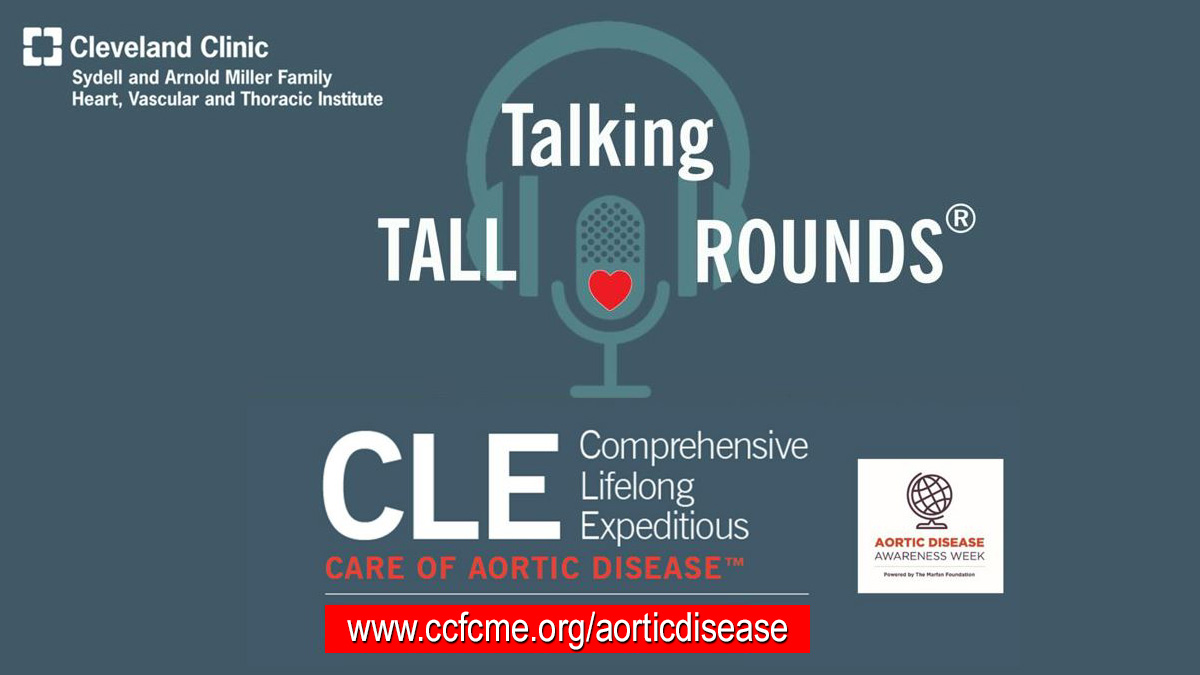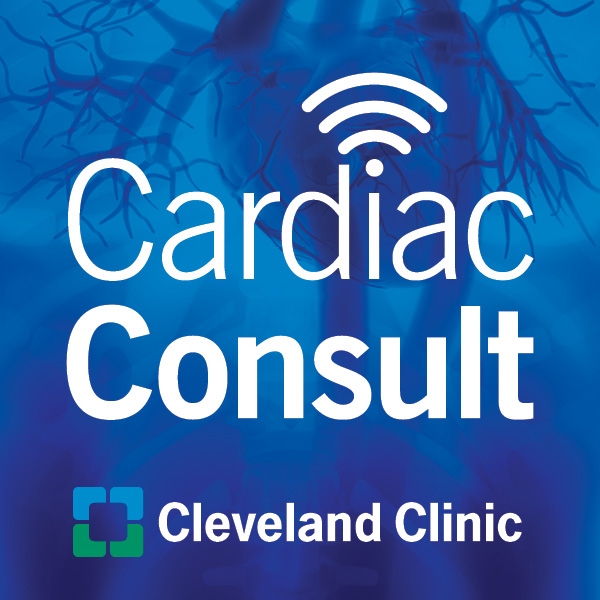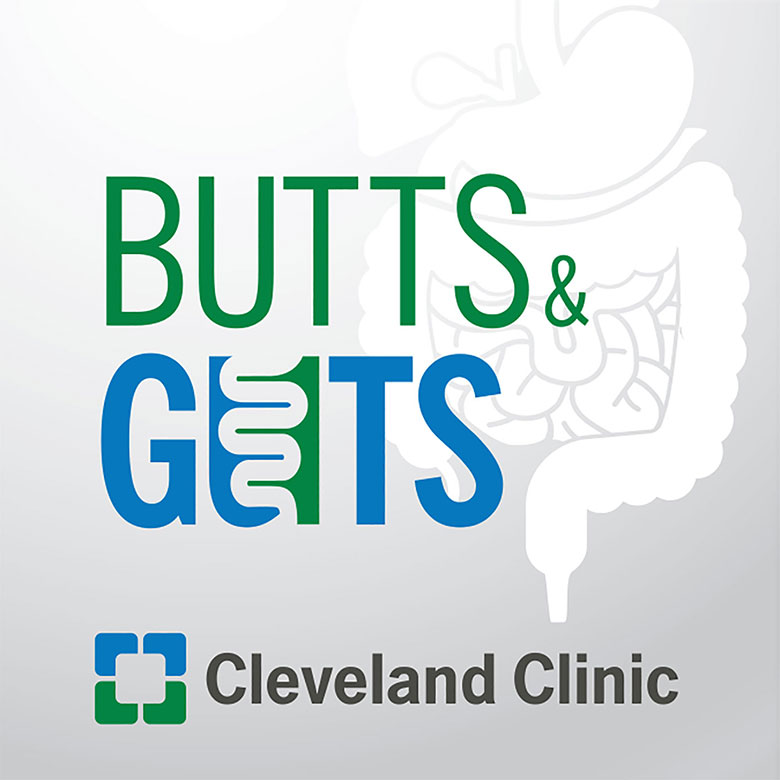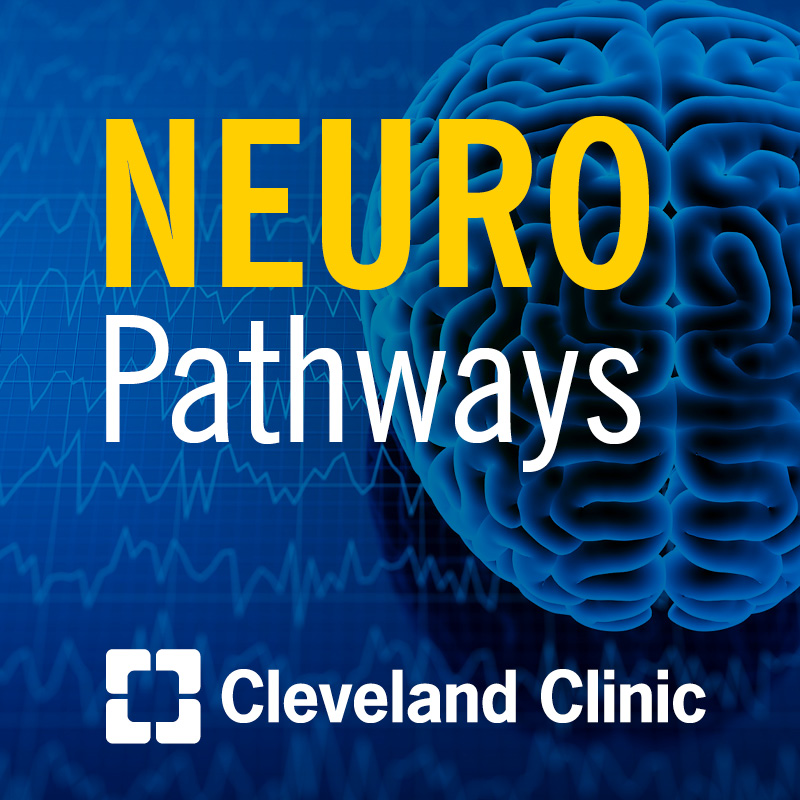Talking Tall Rounds®: Constrictive Pericarditis

Allan Klein, MD, provides an overview and moderates a Tall Rounds session on Constrictive Pericarditis: Tales from the Thickened Pericardial Sac.
Watch the full session and earn free CME.
Subscribe: Apple Podcasts | Podcast Addict | Buzzsprout | Spotify
Talking Tall Rounds®: Constrictive Pericarditis
Podcast Transcript
Announcer:
Welcome to the Talking Tall Rounds series, brought to you by the Sydell and Arnold Miller Family Heart, Vascular and Thoracic Institute at Cleveland Clinic.
Allen Klein, MD:
I want to welcome everybody. My name is Dr. Allen Klein, Director for the Center for the Diagnosis and Treatment of Pericardial Diseases at the Cleveland Clinic. It is my great honor to moderate the session. The title of the talk is Constrictive Pericarditis, Tales from the Thickened Pericardial Sac. We see a lot of patients with constrictive pericarditis at the Cleveland Clinic. We have an exciting program where you hear about the spectrum of constrictive pericarditis from an inflammatory state to a calcific constriction.
You'll hear about the clinical path correlation, the pathophysiology, how do they present clinically, and then we'll talk about imaging including echo, CT and MRI. Then we'll finally end up with radical pericardiectomy.
Erika Hutt Centeno, MD:
I'll be presenting two very interesting cases. The first case is 73-year-old male with a history of shortness of breath after VT ablation. The story goes that he underwent VT ablation at an outside hospital, unfortunately had a ramus injury that resulted in a pericardial effusion. There was no tamponade. This was managed medically. No drainage was attempted. He developed some pericarditis after that and unfortunately reports ongoing shortness of breath, ascites, and lower extremity edema. He presents us on steroids and colchicine and past medical history as noted, BT AFib and OSA, his physical exam shows normal blood pressure and heart rate. DVD was elevated to the jaw, and he had two plus edemas peripherally.
Erika Hutt Centeno, MD:
This is laboratory data that showed mildly elevated inflammatory markers and lymphopenia. EKG showed sinus rhythm with PVCs. His chest x-ray was unremarkable, and this was his resting echocardiogram. So, we can see in the peristernal long axis that he had a moderate circumferential pericardial effusion. You can see that also in the apical four chamber. In the apical four chamber, you can see those diastolic bounds. Then the hepatic flows show diastolic reversal with expiration. And then, in the strain pattern that I'm showing there, we could also see annulus reverses and abnormal global longitudinal strain. He then underwent cardiac MRI, and that showed again the circumferential pericardial effusion. On that four-chamber scene, you can see those diastolic bounds. And then in the T2 Stir image, there was a slightly increased signal of T2 Stir as well as a mild increase in the enhancement. So, this was all suggestive of active inflammation. The diagnosis here was trained diffusive constriction and he was managed medically. We used a lung steroid taper that was stopped five months after the initial visit, aspirin and colchicine and on follow-up, his symptoms had resolved and his lab had normalized, as you can see there. Inflammatory markers were now normal.
Erika Hutt Centeno, MD:
Case 2 was of a 39-year-old male basketball player that presented with chest pain. He had a history of viral illness with sharp pleuritic chest pain and lower extremity edema. He was on Furosemide and had a positive PPD. He was an immigrant from Russia. Former smoker. Physical exam, again, elevated JBD and inflammatory markers here were negative, but he had a positive QuantiFERON. This was his echo, resting echo. And again, here you can see just a posterior effusion on the apical four chamber. You do see that respiratory shift of the interventricular septum. And then on the tissue doppler images down there, you can see that the medial tissue doppler velocity was higher than the lateral. Again, a lateral reverse. The CT scan showed a circumferential calcification of the pericardium, and this patient underwent radical pericardiectomy, as you can see over here. And then on pathology you can actually see how calcified that pericardium was and how thick that was. And so, in conclusion, this patient had calcific TB pericarditis. This was managed with radical pericardiectomy, and he received TB therapy and then follow up was asymptomatic.
Thank you.
Paul Cremer, MD:
I'm going to talk for a few minutes about constrictive pathophysiology and set the stage for the talks that follow in terms of how we think about the exam, the clinical presentation, and the role of imaging in the evaluation of these patients.
Paul Cremer, MD:
So, the first question is what do we know and what do we don't know? And I would say in constriction, there's still a lot we don't know in terms of the overall epidemiology. We know acute pericarditis is fairly common. In general, I would say, if you take all comers who've had acute pericarditis, those that go on to develop chronic constriction is thankfully uncommon, maybe 1 to 2 percent. And that's data that comes from some of our clinical trials, but to say that we don't have a lot of epidemiologic and registry data to support that as well. And the other thing is we don't really know how patients get here. And I'll highlight two clinical scenarios that I think Dr. Hutt touched upon as well that are, I think are, most common for how these patients come to our clinic.
Paul Cremer, MD:
This is a patient I saw recently. This was a consultation for risk stratification for an aortic aneurysm. And he was considered at high risk because of ascites. He'd been followed with hepatology and had an extensive workup for cirrhosis. And no one really thought about the potential contribution of the heart. And I think that's an important point is that constriction often gets missed and it really is, in my view, the most curable form or the only curable form of diastolic heart failure. Dr. Lo Presti will go into these details. And this is a patient in permanent atrial fibrillation, so a lot of the subtleties of the jugular venous wave form are not appreciated here. But clearly there's jugular venous distension, and the echocardiogram that we had, as Dr. Hutt also showed, shows this prominent respirophasic sepal shift.
But when we go back, I had an outside echocardiogram from five years prior, and even at that time you could see evidence of constricted pathophysiology. So, we really want to identify these patients early before they present to us with evidence of end organ damage, which is often related to liver dysfunction.
Paul Cremer, MD:
This is the second type of patient that will walk into our clinic. This is a middle-aged gentleman who had presented with chest pain to his local emergency department, had a CT scan that ruled out pulmonary embolism, but was noted to have a very thickened pericardium but was not diagnosed with pericarditis at the time. His symptoms progressed, continued to have chest pain, he returned several weeks later. Now you can actually see a stent in the right coronary artery. So, he was diagnosed with coronary disease, but that didn't improve his chest pain. And now he's developed heart failure with plural effusions. And by the time he comes to see us, he has continued evidence of constricted pathophysiology. So, this is a patient with incessant pericarditis where the diagnosis was missed and would really benefit from early and intensive anti-inflammatory therapy.
Paul Cremer, MD:
When I think of the patient with pericarditis, really two questions come to mind. The first is how severe is the inflammation, and what are the hemodynamic consequences of that inflammation? And another important point is that constriction or constrictive pathophysiology is a hemodynamic diagnosis. So, as Allen said at the outset, this is really on the spectrum. We can have that first patient that comes in with chronic calcific pericarditis sort of burnt out without a lot of active inflammation, or we can have that patient that comes in either with incessant pericarditis or as the case that Dr. Hutt showed with effusive constrictive pathophysiology.
Paul Cremer, MD:
And in terms of the hemodynamic consequences, the main thing to remember is the concept of ventricular interdependence. And this is really the hallmark feature of construction. Dr. Tan also mentioned briefly that in constriction when the pericardium is constrained and there is a negative intrathoracic pressure with inspiration, that pressure is not transmitted from the pulmonary veins to the left atrium. And so, there's a decreased gradient from the left atrium to the left ventricle. So, what happens? So, this accentuates interventricular interaction, so with inspiration, the interventricular septum shifts to the right, and with expiration it shifts back to the left. And Dr. Jellis will highlight how we can assess that in depth with echo cardiography, in particular with our Doppler assessments. But I think if you keep that concept in mind, you can then explain all of the findings we see in constriction.
Paul Cremer, MD:
The gold standard way to make this diagnosis is with a dual transducer study, a catheter in the left ventricle and the right ventricle and look at the systolic area index. And what we're looking at here is whether there is respiratory discordance or concordance. Concordance is the normal finding, the expected finding, whereas in constriction, what we see is discordance. So, as you can see here, as the patient inspires, the left ventricular pressure decreases, whereas the right ventricular pressure either stays the same or increases, and we see the opposite on expiration. So, it's this concept of discordance reflecting that accentuated interventricular interaction that is characteristic of constriction. And we can look at the ratio in inspiration and expiration in a cutoff that's often used as a systolic area index of 1.1.
Paul Cremer, MD:
I think there's a couple of caveats here. The first is that these studies were classically used to distinguish constriction versus restriction. So, it's often as a case control study design, if you will. And I would say clinically that's not often the case that we're trying to distinguish a patient from constricted pericarditis from someone with a restriction like a cardiac amyloid, though where I do think it comes up clinically and is important to remember is in the context of radiation heart disease. The second thing is there's an obvious selection bias in that all these patients have severe enough disease to present to the cath lab for evaluation. And the gold standard assessment historically has been a surgical correlation, so have severe enough disease to also end up in an operating room. Just a point about how we do his, because this often comes up from the cardiology fellows in terms of what beats you pick to measure. So, it's important to remember, again with inspiration where the pressures are lower, you want to select the lowest early diastolic nadir and take the following beat as your beat for inspiration. Whereas in expiration, you're looking at the highest early diastolic nadir and looking at the next beat for your expiration beat to look in your index. And this was a patient who had a positive study with a systolic area index of 1.4.
Paul Cremer, MD:
Okay. But the echo really gives us more complete hemodynamic information, and we'll go into more of those details momentarily. But I'll give you a high-level overview of how I think a helpful approach to assess these patients in five easy steps, if you will. The first thing I do is look at the interventricular septum. And the important point here is we're not just looking for the septal bounce or shutter, we're looking for the respirophasic septal shift as the hallmark feature of constricted pathophysiology.
The next thing I do is I look at the inferior vena cava. It should be plethoric, and you should really question the diagnosis of constriction if you have a patient that has a normal caliber collapsing IVC. And then third, I look at the mitral inflow pattern. So, constriction is characterized by accentuated early diastolic filling. So, it typically gives you a restrictive filling pattern with a big E and a little a.
And I see, I would say that if you see a pattern of a small e wave and a big A wave, what we think of as a stage 1 type of filling pattern, that is also very unlikely to be a patient with constriction.
And then, as Dr. Hutt showed, we look at the tissue doppler velocities, and constriction is often characterized by elevated septal E-Prime velocity. And finally, and I think this is the most technically challenging in terms of acquiring the images, is looking at the hepatic vein doppler profile. And we look for prominent expiratory flow reversal in the hepatic veins. So, remember everything that we talked about that happens during inspiration shifts back to the left during expiration, and we can see that flow reversal.
Paul Cremer, MD:
So, I think the key takeaway is to remember that in constricted pericarditis there is often a delay to diagnosis. So even in the broader spectrum of pericardial disease, it's not that common. This is really a diagnosis that we should not miss and is curable and really the importance of assessing the degree of inflammation. And Dr. Kwon will touch upon our advanced imaging to help better inform that because we really see a spectrum of patients from incessant pericarditis to burnt out disease. And the hemodynamic diagnosis is characterized by ventricular interdependence. The gold standard for this assessment is a cardiac catheterization and looking at the systolic area index and echo cardiography really remains the frontline for the diagnosis, and I would say often gives insights into some of the more subtle features of constriction in patients who have less severe disease. Thank you.
Saberio Lo Presti Vega, MD:
Good morning. Thank you Dr. Jellis for the introduction. In the next seven minutes, I'm going to be talking about the clinical presentation and physical findings of constricted pericarditis. The theology of constricted pericarditis in developed countries has dramatically changed over the past decades motivated by improvement in diagnostic techniques in the uptake of cardiac surgery and its impact on the pericardial. And this is life summarized results from three large cohort patients from the Mayo Clinic from different decades where patients with constrictions were classified based on their underlying atheology. And they demonstrated how cases of idiopathic disease have dramatically decreased from 73 down to 33 percent in the '80s and '90s, and most recently down to 18 percent in the early 2000s. In terms of the identifiable causes, the top three are cardiac surgery, pericarditis, and radiation. But interestingly, most recent data showed that cardiac surgery surpassed idiopathic etiology as the leading cause of constriction in developed countries.
Saberio Lo Presti Vega, MD:
And these results are not very different from our experience here in the Clinic. And this is a study from 2004 where patients with constricted pericarditis that had idiopathic disease or secondary to vital pericarditis were classified as a single entity and accounted for 46 percent of the cases. But this result was closely followed by cardiac surgery accounting for 37 percent of the cases, and then radiation. And this is important to keep in mind because it helps us to identify high risk populations susceptible of developing the disease.
Saberio Lo Presti Vega, MD:
The clinical presentation can be classified based on timeline as acute, subacute, and chronic. Chronic being patients with a more dramatic presentation and more classic findings of constriction in the settings of fibrotic and classified pericardium. Keep in mind that also constriction can be a transient phenomenon as we can often see in patients' effusive constriction where both phenotypes coexist, patients have constriction in the settings of an intense pericardial effusion. And once the pericardial effusion is draining, patients manifest constrictive symptoms and elevated right atrial pressures that can be a transfer or more chronic phenomena. And from the hemodynamic perspective, we can deal with patients with pure constriction, also called mixed disease when there's a concomitant myopathic process or valvulopathy. But it is always important to recognize that the key hemodynamic fighting is loss of pericardia compliance with reliance on elevated ventricular pressures to maintain cardiac filling and output, which eventually leads to primary diastolic heart failure.
Saberio Lo Presti Vega, MD:
Unfortunately, in clinical practice it's not that simple, and only two-thirds of the patients will manifest as congested heart failure. In the remaining third of the patients, we have on a typical presentation such as chest pain, abdominal symptoms, cardiac tamponade, atrial arrhythmias or will be presenting to us via GI consult as part of the workout for cirrhotic liver disease. In terms of physical findings, the most common signs in examination are elevated JVP, virtually present in almost all patients, followed by peripheral edema, acromegaly and less frequent other signs that I've listed here for your information.
Let's briefly refresh our knowledge about physical examination in patients with constriction. Remember, the jugular venous pressure is an indirect measurement of the right atrial pressure that can be elevated in cardiac and non-cardiac conditions. And among the cardiac conditions listed here, pericardial disease is one of them.
Saberio Lo Presti Vega, MD:
When we analyze patients with JVPs it's important to recognize our anatomies as landmarks. And they've demonstrated here the presence of an engorged external and accessory external jugular vein, which they are not as accurate as the internal jugular vein for assessment of the right atrial pressure. Remember that your IJ is in the middle clavicle in between the head of the external clad MA muscle and runs underneath this muscle all the way up to the earlobes and has these characteristics by facing a multi-facing wave appearance visually. And it's not palpable. And the way to differentiate from the carotid stroke is that the carotid stroke is a single up slope and it's palpable. Remember that maneuvers that increase your right atrial pressure such as Valsalva or hepatojugular reflux will increase the engorgement of the neck veins and facilitate their analysis. Keep in mind that patients with constriction in up to 20 percent of the cases can have pulses paradoxus sign, which is the paradoxical increase of the jugular venous pressure during inspiration.
Saberio Lo Presti Vega, MD:
Another important factor to pay attention to is the jugular venous pulse wave form. And I'm going to turn your attention to the X and Y dissent. The X dissent corresponds to a phenomenal right atrial relaxation enhanced by ventricular contraction during systole. And the Y dissent is a passive artery feeling during early diastole. And I'll be lying to you if I tell you that the recognition of the upsloping waves is something easy to do. However, in patients with constriction it's possible to identify the dissents as in this video is showing. Patients with constrictions can manifest as sharp in the Y dissent, which is called featheredge sign. It's non-specific for constriction, and also can be seen in patients with restricted cardiomyopathy and corresponds to a rapid and early ventricular filling during early diastole.
And this is what corresponds to their restrictive field pattern on mitral inflow, spectral doppler with an E to A ratio more than 2 and corresponds to what we described in the catheterization lab as the deep am plateau, square root sign.
Saberio Lo Presti Vega, MD:
Also, patients with constriction can have a sharp and deep X and Y descendants is so-called W or N sign. Ultimately, the right atrial pressures will transmit retrograde to the systemic veins and patients can manifest a sinus requiring pericardial synthesis or peripheral edema. The hallmark of a fast auscultation is the pericardial knock. The pericardial knock is an additional third sounding early diastole that has a high-pitch quality occurs at the throw of the Y descent and is due to the rapid deceleration of the ventricular feeling reaching a premature plateau when the myocardial meets a non-compliant pericardial.
Saberio Lo Presti Vega, MD:
I have two videos here, but I believe the audio's just going to be played online for differentiating between the pericardial knock and the S3. And the main difference is that the pericardial knock has a high-pitch quality as compared with a low-pitch quality of the S3. And finally, just a few words about pulses paradoxes. The paradox of the pulse refers that during inspiration there's a drop in systolic blood pressure of more than 10 millimeters of mercury. And this is most seen in patients with tamponade but can be present in up to 20 percent of the patients with constriction. And, as my colleagues have explained, it's secondary to dissociation in between intrathoracic and intra cardiac pressures due to the isolation from the sick pericardium that will ultimately impair the transformer gradient, the ventricular feeling of the left ventricle and due to ventricular interdependence, the septum will ultimately bulge to the left impairing the stroke volumes and dropping the systolic blood pressure during inspiration.
Saberio Lo Presti Vega, MD:
And this is based on all these phenomena of ventricular interdependency. So, what we look for echocardiographically when we do an end mode across the septum and we look for septal bounds and posterior shift, also significant respirophasic changes of our mitral tricuspid inflow. And it also corresponds to the ventricular systolic discordancy between the LV and RV. So, I'm going to stop here with a few takeaways. Remember that it's important to recognize high-risk populations. Signs and symptoms and constriction may be subtle. And don't forget about the physical examination and fundamentals of medicine.
Thank you for your attention.
Announcer:
Thank you for listening. We hope you enjoyed the podcast. Like what you heard? Visit Tall Rounds online@clevelandclinic.org/tallrounds and subscribe for free access to more education on the go.

Cardiac Consult
A Cleveland Clinic podcast exploring heart, vascular and thoracic topics of interest to healthcare providers: medical and surgical treatments, diagnostic testing, medical conditions, and research, technology and practice issues.



